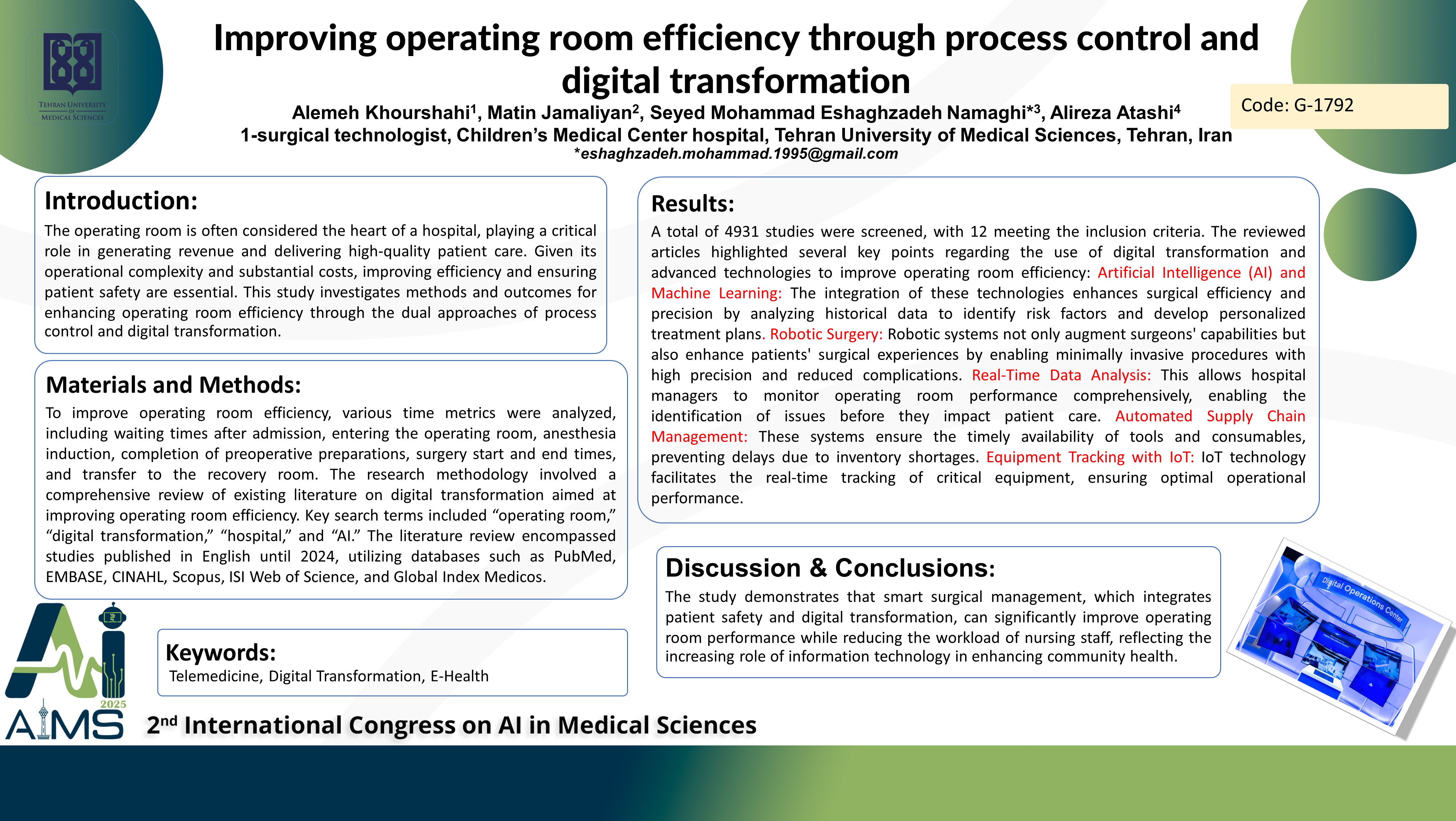بهبود کارایی اتاق عمل از طریق کنترل فرآیند و تحول دیجیتال
کد: G-1792
نویسندگان: Alemeh Khourshahi ℗, Matin Jamaliyan, Seyed Mohammad Eshaghzadeh Namaghi *, Alireza Atashi
زمان بندی: زمان بندی نشده!
برچسب: دستیار مجازی هوشمند
دانلود: دانلود پوستر
خلاصه مقاله:
خلاصه مقاله
Background and Objective: The operating room is often considered the heart of a hospital, playing a critical role in generating revenue and delivering high-quality patient care. Given its operational complexity and substantial costs, improving efficiency and ensuring patient safety are essential. This study investigates methods and outcomes for enhancing operating room efficiency through the dual approaches of process control and digital transformation. Methods and Strategies: To improve operating room efficiency, various time metrics were analyzed, including waiting times after admission, entering the operating room, anesthesia induction, completion of preoperative preparations, surgery start and end times, and transfer to the recovery room. The research methodology involved a comprehensive review of existing literature on digital transformation aimed at improving operating room efficiency. Key search terms included “operating room,” “digital transformation,” “hospital,” and “AI.” The literature review encompassed studies published in English until 2024, utilizing databases such as PubMed, EMBASE, CINAHL, Scopus, ISI Web of Science, and Global Index Medicos. Findings: A total of 4931 studies were screened, with 12 meeting the inclusion criteria. The reviewed articles highlighted several key points regarding the use of digital transformation and advanced technologies to improve operating room efficiency: Artificial Intelligence (AI) and Machine Learning: The integration of these technologies enhances surgical efficiency and precision by analyzing historical data to identify risk factors and develop personalized treatment plans. Robotic Surgery: Robotic systems not only augment surgeons' capabilities but also enhance patients' surgical experiences by enabling minimally invasive procedures with high precision and reduced complications. Real-Time Data Analysis: This allows hospital managers to monitor operating room performance comprehensively, enabling the identification of issues before they impact patient care. Automated Supply Chain Management: These systems ensure the timely availability of tools and consumables, preventing delays due to inventory shortages. Equipment Tracking with IoT: IoT technology facilitates the real-time tracking of critical equipment, ensuring optimal operational performance. Conclusion: The study demonstrates that smart surgical management, which integrates patient safety and digital transformation, can significantly improve operating room performance while reducing the workload of nursing staff, reflecting the increasing role of information technology in enhancing community health.
کلمات کلیدی
Telemedicine, Digital Transformation, E-Health
